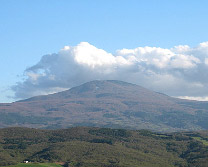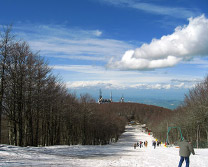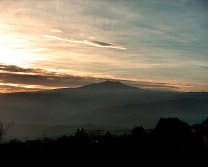B&B Predio San Fernando

Mount Amiata
Amiata, museum under the open sky
The history of Amiata is one lost in time, lost in the geological eras when the movements of the earth brought about the formation of a volcano that for thousands of years was active and afterwards became the main source of development of people who had gone there to live.
Amiata is a cultural center. Water is its main element, earth, fire and air revolve around it. This mix of elements brought about an art and culture still today worthy of our admiration. The art of Siena, from the Middle Ages to today and the art of the Maremma meet on Mount Amiata and mingle in the beech and chestnut woods. The presence of six nature preserves led Ernesto Balducci, born in Santa Fiora, to call Mount Amiata “an island on terra firma”.
Amiata is an open-air museum. Its beauty lies in the nature that surrounds it and in the centuries of work and life that made it step by step what it is today, with its architectural and artistic marvels.
The Abbey of San Salvatore is a rare example of Romanesque architecture outside of France, and one of the few in Tuscany, if not in Italy. In addition to the Longobard crypt, the abbey also houses a 12th century crucifix from the French school.
The church of Saints Stefano and Degna, in Castiglion d'Orcia, houses a Madonna by Simone Martini and another by Pietro Lorenzetti—both of rare beauty.
The Saints Peter and Paul church in Roccalbegna boasts an alter piece by Ambrogio Lorenzetti, the Madonna of the Cherries, surrounded by the two saints of the church, which is a rare masterpiece. Numerous examples of the Scuola Senese from the 13th to 18th century abound. The works of the local Nasini painters, who worked between Castel del Piano and Piancastagnaio, frescoed almost all of the churches in the Amiata area, including the beautiful Pieve ad Lamulas, in Montelaterone, with the splendid wooden Madonna of the 15th century and the Della Robbia ceramics of Santa Fiora and Radicofani.
All of Mount Amiata is a large natural space. The fir, chestnut and beech groves, the rare botany, and the fauna include exceptional animal species not seen in other parts of Tuscany. Over the last few years, various rescue programs have concentrated their efforts on indigenous species like the wild boar. This dedication to the environment led to many of the areas being declared “protected”. There are also several research structures and centers for wounded animals present in the area.



